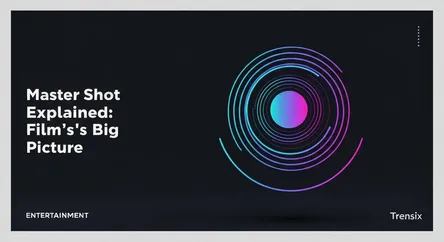Entertainment
Master Shot Explained: Film's Big Picture

Discover the master shot, a key filmmaking technique that captures an entire scene in one continuous take. Learn its purpose and impact on cinema.
What Is It?
A master shot is a fundamental filmmaking technique where an entire scene is filmed in a single, continuous take. Typically using a wide or medium shot, it captures all the actors and the essential action from start to finish. This shot serves as the foundation for the scene during the editing process. Editors then intercut this master take with closer shots, like close-ups and medium shots (known as coverage), to emphasize specific moments, reactions, or details, creating a seamless and dynamic final sequence.
Why Is It Trending?
While a classic technique, the master shot is constantly being reinvented. Directors like Sam Mendes in "1917" have popularized the 'oner'—an extended, complex master shot that serves as the entire scene or film. This trend showcases incredible technical choreography and creates a highly immersive audience experience. With the rise of film analysis on platforms like YouTube and TikTok, these ambitious shots are often broken down and celebrated, bringing renewed attention to the craft and skill behind this foundational cinematic tool.
How Does It Affect People?
For the audience, the master shot provides crucial context. It establishes the geography of the scene and the spatial relationships between characters, preventing disorientation. Its use affects the film's pacing and rhythm; long takes can build tension or create a sense of realism, while quick cuts away from it can heighten excitement. Ultimately, the master shot is an invisible guide, ensuring viewers are grounded in the story's world, allowing the director and editor to manipulate focus and emotion effectively.